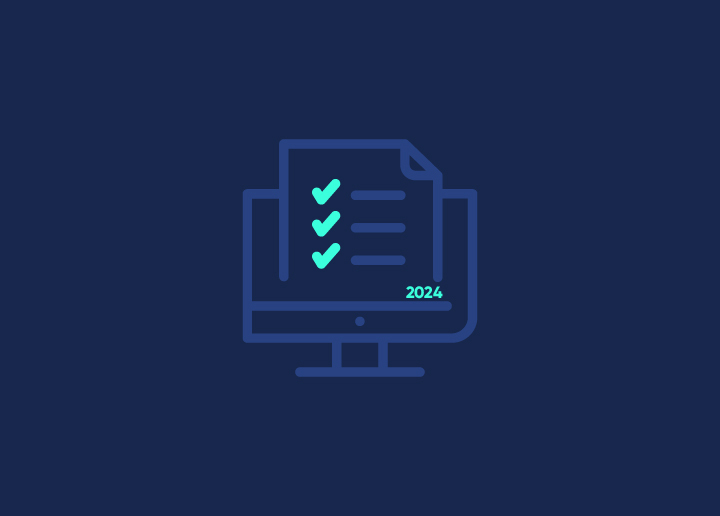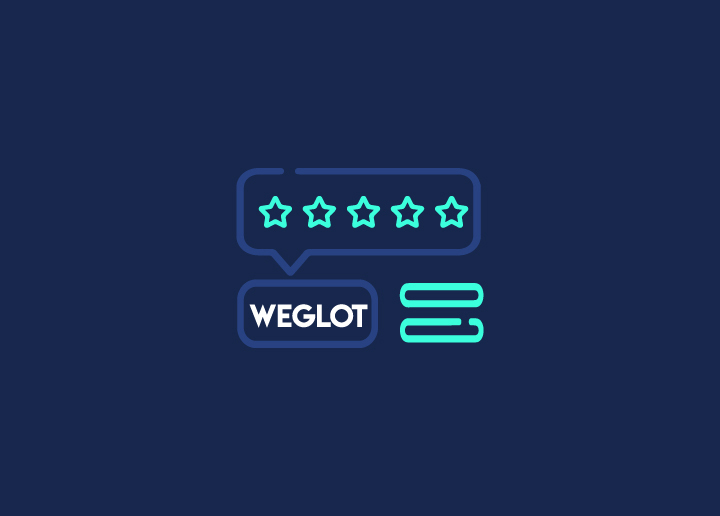Whether you want to enhance user experience, optimize your website for search engines, or incorporate new features, a website rebuild is an investment that promises improved performance, increased traffic, and a competitive edge in the dynamic online sphere.
In 2024, a well-maintained and up-to-date website is indispensable for businesses. The online presence of a website serves as the virtual storefront, making it crucial to ensure it remains functional, visually appealing, and in line with the latest technological advancements. This checklist aims to guide you through the process of rebuilding your website, emphasizing the significance of keeping pace with current trends and technologies.
Contents
ToggleWebsite Rebuild: The Ultimate 10 Points Checklist
Ensure a seamless and successful website rebuild process with this ultimate checklist. From evaluating your current website to ongoing website maintenance, this guide will steer you through each step, guaranteeing a modern, functional, and user-centric website.
Evaluate Your Current Website
In the preliminary stages of a website rebuild, thoroughly evaluating your existing website is paramount. Understanding the strengths and weaknesses of your current website provides a solid foundation for strategic improvements.
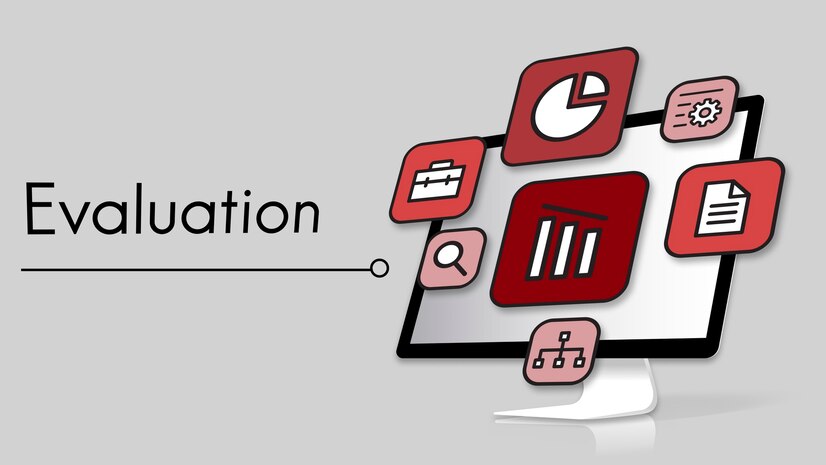
Assess Website’s Design and Layout
Begin by scrutinizing the visual aspects of your website. Evaluate the design elements, color schemes, and overall layout. Ensure the website design aligns with your brand identity and offers a visually appealing and intuitive user interface. Prioritize responsiveness across devices, as a mobile-friendly design is crucial for engaging a diverse audience.
Review the Website’s Content and Structure
Examine the content architecture and organization. Assess the relevance, accuracy, and freshness of the content. Streamline navigation by categorizing information logically, making it easier for users to find what they need. Optimize your site’s content for search engines by incorporating relevant (targeted) keywords and ensuring a balance between informative and concise messaging.
Read More:Ways Google’s SGE Will Affect Your Content Strategy
Analyze the Website’s Performance and Loading Speed
Evaluate the website’s performance metrics and loading speed. A slow-loading site can lead to high bounce rates in an era where users demand instant access. Identify and rectify bottlenecks affecting site speed, such as large image files or inefficient code. Leverage tools to assess performance and ensure a seamless browsing experience.
Consider User Experience and Navigation
Delve into the user experience (UX) aspects of your website. Assess how easily website visitors can navigate the pages, find information, and complete desired actions. Optimize user journeys by simplifying navigation, implementing clear call-to-actions (CTAs), and minimizing the number of clicks required to reach key content.
Know more: How To Conduct A WordPress Site Audit
Define Goals and Objectives for Website Rebuild
Define the core purpose of your website and identify the primary target audience. Whether it’s to showcase products, offer services, or disseminate information, aligning the purpose with the expectations of your target audience is fundamental. Understand their needs, preferences, and behaviors to tailor the rebuild to cater to their specific requirements.
In addition, establish clear and measurable goals for the website rebuild. Specificity is key, whether it’s increasing website traffic, improving user engagement, or boosting online sales. To set quantifiable objectives, utilize metrics like conversion rates, bounce rates, and user interaction data. Align these goals with broader business objectives to ensure the website rebuild strategy contributes meaningfully to overall success.
Plan and Organize
Craft a comprehensive project timeline that outlines key milestones, deadlines, and phases of the website rebuild. Clearly define tasks, assign responsibilities, and set realistic timeframes. A well-structured timeline serves as a guiding beacon, ensuring the project progresses smoothly and is completed within the stipulated timeframe.
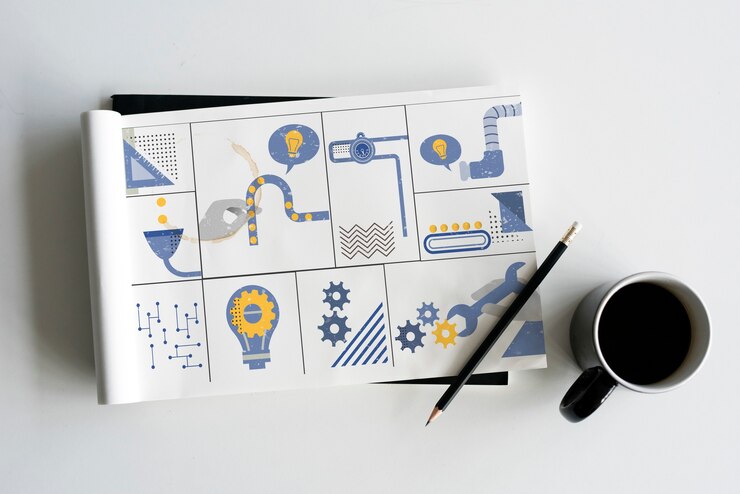
Allocate Resources and Budget
Determine the resources required for the rebuild, including personnel, tools, and technology. Allocate a budget that encompasses design, development, and any additional costs. A reasonable resource allocation and budgetary considerations set the foundation for a successful rebuild, minimizing the risk of unforeseen challenges.
Establish a Clear Plan for Content Migration
Develop a systematic plan for migrating content from the existing website to the new platform. Consider restructuring content if necessary, ensuring that the information seamlessly transitions from the current site to the updated site. Prioritize the preservation of SEO value and user accessibility during the content migration process.
Consider Search Engine Optimization (SEO) Strategies
Integrate SEO considerations into the rebuilding process. Conduct keyword research, optimize meta tags, and ensure the website structure is conducive to search engine algorithms. Implementing SEO strategies from the outset enhances the discoverability of your new website and sets the stage for favorable organic search engine rankings.
Content Strategy for Website Rebuild
Initiate the content strategy phase by thoroughly assessing your current website’s content. Identify content that aligns with your goals, updating information where necessary and eliminating obsolete or redundant materials. Streamlining content ensures a more focused and relevant user experience.

Develop a Content Style Guide
Craft a comprehensive content style guide that outlines your website’s tone, voice, and formatting standards. Consistent messaging fosters brand identity and enhances user trust. A style guide serves as a reference point for content creators, ensuring uniformity and coherence across all website elements.
Plan New Content Additions and Establish a Content Creation Schedule
Anticipate the needs of your audience and plan for new content additions that align with your goals and objectives. Establish a content creation schedule to maintain a steady flow of fresh material. Whether it’s blog posts, product updates, or multimedia content, a proactive approach to content creation contributes to sustained user engagement.
Want To Create Content That Resonates With Your Audience?
Let’s face it, creating quality content takes time and effort. But with our content creation services, we’ll handle all the hard work for you.
Website Rebuild Design and Visual Elements
Begin by assessing your current website design. Identify elements that resonate with your brand and aspects that may require improvement. Consider user feedback and analytics to create an informed redesign process, ensuring that the new design addresses user preferences and enhances overall usability.

Research and Gather Design Inspiration
Explore current web design trends, industry best practices, and innovative approaches to gather inspiration. Analyze competitor websites and websites outside your industry to identify elements that align with your vision. This research phase can help conceptualize a design that stands out in the digital landscape.
Create Wireframes and Mockups for the New Website Design
Translate conceptual ideas into tangible structures by creating wireframes and mockups. These visual representations provide a blueprint for the website’s layout and functionality. Experiment with different design elements, ensuring the user journey is intuitive and visually engaging. Seek feedback from stakeholders to refine and iterate on the design concept.
Select Appropriate Color Palette, Fonts, and Imagery
Make informed decisions about the visual elements that will define your website. Choose a color palette that aligns with your brand identity and evokes the desired emotions. Select fonts that enhance readability and complement the overall aesthetic. Curate imagery that resonates with your target audience and reinforces your brand message.
Read: The Importance Of User Context: Why It Matters For Web Performance And UX
How We Helped InAPP With Website Redesign?
Seahawk helped InApp, a software development company, with its website redesign. Our team created wireframes and style guides to ensure the best user experience and design consistency. We also analyzed SEO and developed personas and customer journeys for future campaigns. The new website launch allowed for strategic marketing campaigns, resulting in continuous growth. For more information on how Seahawk successfully assisted InApp with its website redesign project, read this case study.
Elevate Your Brand With Our Expert Website Design Services
We can create a professional and user-friendly platform that can make all the difference in attracting and retaining customers.
Development and Technical Considerations
As you progress into the web development phase of your website rebuild, focusing on technical considerations is crucial to ensure a robust and seamless online presence. This involves selecting the right platform, optimizing web pages for various devices, conducting thorough testing, and addressing URL changes.

Choose a Reliable Website Platform or Content Management System (CMS)
Selecting a suitable website platform or CMS is foundational to the development process. Consider factors such as scalability, ease of use, and available features. Whether it’s WordPress or a custom-built solution, choose a platform that aligns with your website’s goals and facilitates efficient content management.
Learn: Drupal vs WordPress: Which Is The Better CMS
Ensure Responsive Design for Mobile Devices
In an era dominated by mobile users, ensuring responsive design is paramount. Optimize the website layout and functionality to seamlessly adapt to various screen sizes. Responsive web design not only improves user experience but is also a key factor in search engine rankings.
Read: Difference Between A Mobile Site And A Responsive Site
Test Website Functionality and Performance Across Multiple Browsers and Devices
Thoroughly test your website’s functionality and performance across different browsers (Chrome, Firefox, Safari, etc.) and devices (desktops, tablets, smartphones). This testing phase helps identify and rectify any compatibility issues, ensuring a consistent and reliable user experience regardless of their chosen platform.
Implement Proper URL Redirects for Any Changes in Page URLs
Implement proper URL redirects if there are changes in page URLs during the rebuild. This is essential for maintaining search engine rankings and ensuring users are seamlessly redirected to the correct landing pages. Failing to implement redirects can result in broken links and negatively impact both user experience and SEO.
Content Migration

As you transition from planning to execution in your website rebuild, content migration takes center stage. This process involves:
- Seamlessly transferring existing content to the new website.
- Ensuring accuracy.
- Formatting consistency.
- Implementing proper redirects for URL changes.
Develop a Plan for Transferring Existing Content to the New Website
Craft a detailed content migration plan outlining the step-by-step process of transferring content from the old site to the new website. Consider the structure and organization of content, ensuring that the transition is smooth and preserves the integrity of information. Identify potential challenges and develop contingency plans to address any unforeseen issues during the migration.
Ensure All Content Is Accurately Migrated and Formatted
Execute the content migration plan meticulously, focusing on accurate and consistent transfer of all existing content. Pay attention to formatting details, such as text styles, images, and multimedia elements, to maintain visual and informational coherence. Regularly check and review the migrated content to identify and rectify any discrepancies.
Set Up Proper 301 Redirects for Changed URLs
In cases where page URLs undergo changes during the rebuild, implement proper 301 redirects. Redirects are crucial for preserving search engine rankings and ensuring users are seamlessly directed to the correct pages. Monitor and test redirects to verify their effectiveness and address any issues promptly.
Testing and Quality Assurance
As the final steps before the official launch of your rebuilt website, rigorous testing and quality assurance are imperative. This phase involves comprehensive assessments of features, functionality, links, loading speed, and user experience to ensure a flawless and user-friendly website.

Conduct Thorough Testing of All Website Features and Functions
Initiate testing by systematically examining every feature and functionality of the website. From forms and interactive elements to eCommerce processes, thoroughly assess functionality, responsiveness, and compatibility across various devices and browsers. Address any identified issues promptly to guarantee a seamless user experience.
Check for Broken Links or Missing Images
Conduct a meticulous scan of the entire website to identify & fix broken links or missing images. Broken links (on a page/blog) can negatively impact user experience & SEO efforts, making it crucial to ensure all hyperlinks are functional. Similarly, missing images can disrupt the visual appeal of your website.
Verify Proper Loading Speed and Performance
Optimize your loading speed and overall website performance by evaluating web server response times and page loading times. Utilize site speed tools to identify areas for improvement and implement necessary optimizations. A fast-loading website not only enhances user satisfaction but also positively influences search engine rankings.
Solicit Feedback from Multiple Users for Usability Testing Purposes
Engage multiple users in usability testing to gain diverse perspectives on the website’s user interface and overall usability. Collect feedback on navigation, content accessibility, and any potential pain points. Use this feedback to make final adjustments that enhance the overall user experience.
Launch and Promotion
The culmination of meticulous planning and execution is the launch of your revamped website. This phase involves setting a launch date, ensuring proper tracking mechanisms, developing a marketing strategy, and monitoring website performance to ensure a successful debut in the digital landscape.

Arrange a Planned Launch Date
Set a definitive launch date for your new website. Coordinate this date with your team to ensure everyone is aligned and all necessary elements are in place. A planned launch date provides a sense of direction and allows for a coordinated effort to make the transition seamless.
Ensure All Necessary Tracking Codes and Analytics Are Properly Installed
Before the launch, confirm that all essential tracking codes and analytics tools are correctly installed. This includes tools like Google Analytics, heatmaps, and other tracking mechanisms. These tools are crucial for monitoring user behavior, gathering insights, and making data-driven decisions post-launch.
Develop a Marketing Plan to Promote the New Website
Create a marketing plan to promote your newly revamped website. Utilize various channels like relevant social media platforms, email newsletters, and possibly paid advertising, to generate awareness and drive traffic. Highlight key features, improvements, or exclusive offerings to entice both existing and new audiences.
Monitor Website Performance and Make Necessary Adjustments
Once the website is live, closely monitor its performance. Track key metrics like traffic, conversion rates, and user engagement. Be proactive in addressing any issues, and consider user feedback to make necessary adjustments. Continuous monitoring and improvement are integral to maintaining a successful online presence.
Ongoing Website Maintenance
Beyond the launch, the sustained success of your website relies on ongoing maintenance and site optimization. This phase involves establishing a routine for updates, monitoring key performance indicators, and continuously refining the website based on user feedback.
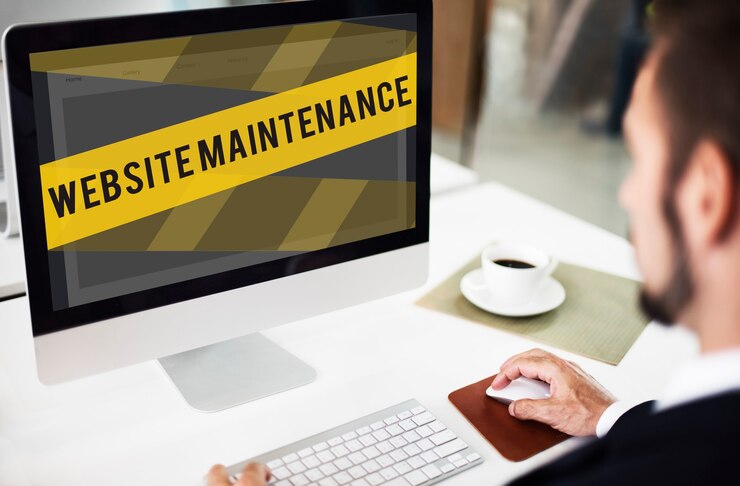
Set Up a Regular Schedule for Updates and Maintenance
Initiate an ongoing maintenance schedule to ensure your website stays current and secure. Regularly update software, plugins, and other components. Address security vulnerabilities promptly and implement necessary improvements. A proactive maintenance routine contributes to your website’s long-term stability and reliability.
Monitor Website Performance and Analytics
Consistently monitor the performance of your website by analyzing key metrics and analytics. Track user behavior, conversion rates, and traffic patterns. Identify any emerging trends or potential issues. Regular site performance monitoring provides insights that inform strategic decisions and align your website with user expectations.
Read: Tools To Test WordPress Performance And Speed
Conclusion
Adhering to a comprehensive website rebuild checklist is paramount for achieving and sustaining online success. This structured approach, from evaluation to launch and beyond, ensures your website aligns with user expectations, industry standards, and technological advancements. The checklist serves as a guiding framework, fostering a strategic and systematic execution of each phase.
Moreover, the journey doesn’t conclude at the launch; ongoing maintenance and improvement are critical for sustained success. Regular updates, performance monitoring, and user feedback integration contribute to a dynamic and responsive online presence. By embracing this iterative process, your website not only stays relevant but becomes a resilient and valuable asset online.
Website Rebuild FAQs
What is a website rebuild?
A website rebuild is the process of completely overhauling and redesigning an existing website. This involves updating the website’s design, layout, content, and functionality to improve its overall appearance, user experience, and performance.
How much should a website rebuild cost?
The cost of a website rebuild depends on several factors like the size & complexity of the website, the amount of customization and functionality needed, and the web developer’s expertise. On average, a website rebuild can cost anywhere from a few hundred dollars to several thousand dollars.
How do I remake an existing website?
To remake an existing website, you can start by identifying the areas that need improvement or updating. This could include the design, content, functionality, and user experience. Then, you can work with a web developer or use website-building tools to redesign and rebuild the website according to your desired changes.
How much does it cost to redesign an existing website?
The cost of redesigning an existing website can vary depending on the scope and complexity of the project. A basic website redesign can cost anywhere from $999 to $5,000, while a more complex and customized redesign can cost between $5,000 to $10,000 or more.















